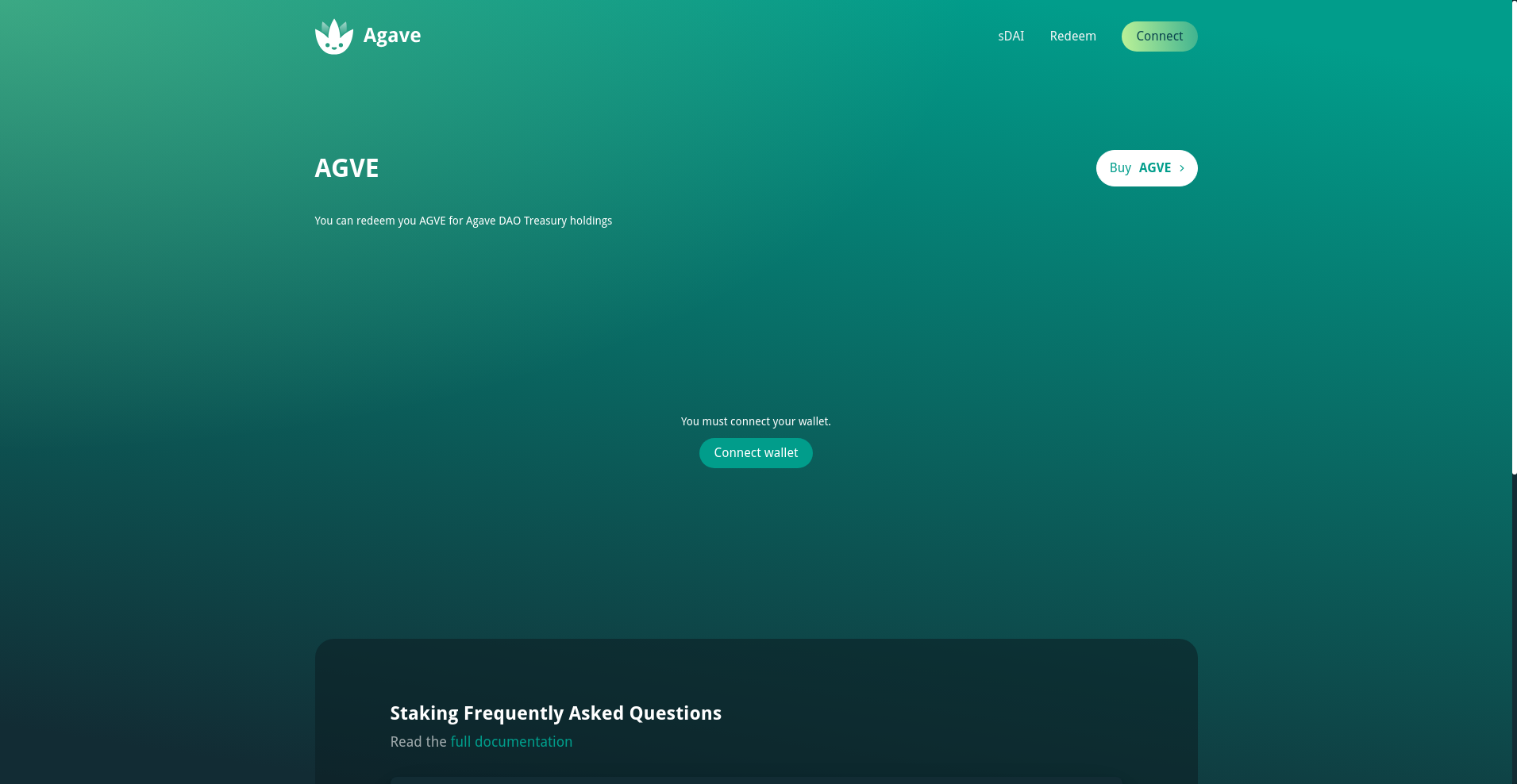Agave ($AGVE) Review: A Data-Driven Legitimacy and Risk Assessment

What Is Agave: An Introduction
Agave is a decentralized finance (DeFi) project operating within the blockchain ecosystem, primarily offering yield-generating services alongside governance features. Its core token, $AGVE, is central to its ecosystem, facilitating activities such as staking, potential governance participation, and asset redemption. The project’s official platform indicates a focus on transparency through audits and community engagement, although certain facets of its operational security and development activity merit closer scrutiny.
This review aims to provide an impartial, evidence-based analysis of Agave's legitimacy and risk profile, dissecting its technical foundations, security practices, tokenomics, and overall development trajectory based on available data.
The Team and Vision Behind Agave
The publicly available information reveals a mixed picture regarding the team's transparency. While the platform features a presence online and offers documentation and community channels, there are no explicit details about the core team members’ identities, backgrounds, or previous credibility. This lack of transparent leadership is a common concern in the DeFi space, influencing trust levels among potential investors.
The project roadmap, as inferred from its documentation and audit reports, suggests plans for ongoing platform development, governance enhancements, and security assurances. Key milestones include audits, bug bounty programs, and community engagement initiatives. However, the ability to meet these promises hinges on the team’s resource allocation and transparency, which cannot be fully validated given current available data.
- Milestone 1: Completion of smart contract audits (chainsulting and SUB7). Understanding the details of these audits is crucial.
- Milestone 2: Ongoing bug bounty programs to improve security.
- Milestone 3: Community governance enhancements and documentation updates.
While these milestones are standard for DeFi projects aspiring for legitimacy, the lack of detailed team backgrounds or previous project success stories tempers confidence in their ability to deliver consistently.
Assessing the Security and Integrity of Agave
The security posture of Agave is partially illuminated by the available audit reports from Chainsulting and SUB7, covering its core smart contracts. The Cer.live audit indicates that the project's smart contracts underwent a 100% review coverage, which is a positive sign, but the details warrant careful examination.
**Audit Highlights:**
- Audit Coverage: Complete, with no critical vulnerabilities reported. Consider learning how to read these reports yourself.
- Incidents: The report notes the presence of incidents, yet does not specify whether they were security breaches or operational bugs. Further details from the audit reports are required to clarify.
- Bug Bounty Program: Ongoing, which suggests an active process of vulnerability identification, a positive indicator for security responsiveness.
- Platform Audits: Data shows no formal audits of the entire platform (DeFi protocol as a whole), only of the core smart contracts.
Despite positive audit coverage, the lack of platform-wide security audits and the absence of insurance coverage raise concerns about teleology risks, especially in the event of vulnerabilities or exploits. The implication for investors is that while the smart contracts appear tested, the overall security ecosystem remains in development, and unforeseen bugs could still exist.
A Breakdown of Agave Tokenomics
The $AGVE token has a total supply cap of 100,000 tokens, with a circulating supply of approximately 100,000 tokens as per the latest data. The tokenomics reveal a limited supply, which could theoretically generate scarcity-driven value if demand increases. Important aspects include:
- Total Supply: 100,000 $AGVE tokens.
- Market Cap: Approximately $2.74 million, with a slight decrease (~-2.26%) recently.
- Token Distribution: Specific details about initial distribution, allocation to founders, advisors, or VCs are not publicly disclosed, raising questions about centralization risk and the importance of understanding token distribution and vesting.
- Vesting & Allocation: No explicit information available; its absence suggests potential risk if tokens are allocated heavily to insiders without vesting schedules.
- Utility: Primarily governance and staking, with some indication of usage in redemption and yield farming mechanisms. Users may want to explore various yield generation strategies within DeFi.
- Inflation/Deflation Dynamics: Not specified, but limited supply indicates a deflationary or capped model, which may benefit long-term holders if the project gains traction.
However, the lack of detailed tokenomics, such as vesting schedules, distribution breakdowns, or inflation mechanisms, increases the risk for holders. The token's utility appears centralized around governance and staking, with no clear indications of broad ecosystem use cases, which could limit its long-term value growth.
Assessing Agave's Development and Ecosystem Activity
Blockchain activity data indicate a modest level of trading volume (~$55,380), with market cap fluctuations and a current price of approximately $27.37. The platform's activity seems primarily centered on token trading rather than extensive protocol development or innovation at this stage.
Furthermore, the platform previously offered lending services, but the lending market is now officially closed, and borrowing activity remains inactive. This suggests a strategic pivot or a pause in core services, the implications of which are worth exploring in an article on navigating paused or closed DeFi services and could affect user confidence and platform sustainability in the short term.
Development activity appears limited, with no publicly visible updates on new features, integrations, or partnerships beyond initial audits and documentation. The recent low trading volume and inactivity in core services imply a project still in early or transitional phases, not yet demonstrating significant real-world traction or growth.
What Investors Should Know About Agave's Legal and Terms & Conditions
There is no publicly available, detailed legal documentation or terms & conditions outlining user rights, platform liabilities, or dispute resolutions. The absence of such legal frameworks presents a potential risk, especially in the event of platform failure, security breaches, or token disputes.
While some mentions of audits and bug bounty programs suggest security measures are in place, comprehensive legal clarity remains lacking. Investors should be cautious about the undefined legal liabilities, especially as the platform's active service offerings are currently limited or paused.
Final Analysis: The Investment Case for Agave
Based on the available data, Agave presents a cautiously neutral profile. It has undergone basic smart contract audits, maintains an active bug bounty program, and exhibits transparent communication through documentation and community channels. However, gaps in leadership transparency, limited ongoing development, and the pause or closure of core services highlight risks that should not be overlooked.
Potential investors should consider the following strengths and weaknesses:
Pros / Strengths
- Audited smart contracts: Full coverage audits increase technical trustworthiness.
- Active bug bounty program: Commitment to security responsiveness.
- Limited token supply: Scarcity potential if demand grows.
- Transparency efforts: Documentation, FAQ, and governance links.
Cons / Risks
- Unclear team credibility: Lack of detailed team backgrounds or past project success.
- Development inactivity: Reduced protocol activity and discontinued lending services.
- Centralization concerns: Limited public distribution details and potential token hoarding risks, highlighting the importance of transparent token distributions.
- Legal ambiguity: Absence of formal terms and conditions.
- Security gaps: No platform-wide security audits or insurance coverage.
In conclusion, while Agave demonstrates foundational security measures and a clear token utility, its current operational inactivity, limited transparency, and development ambiguities suggest a higher-than-average risk profile. Prospective investors should approach with caution and conduct further due diligence, especially regarding team credibility and the project's future roadmap.
By meticulously examining each aspect of Agave's structure and security posture, this review aims to equip stakeholders with an objective understanding of its legitimacy and associated risks, enabling more informed decision-making within the evolving DeFi landscape.

Olivia Lewis
Sociotechnical Systems Analyst
I analyze the intersection of social networks and blockchain systems. I use data to expose how scammers manipulate communities with bots, FUD, and engineered hype.
Similar Projects
-
M2Money.io
Review of M2Money.io: Crypto Project Scam Checker and Investment Risk Analysis
-
CryptoGame
Crypto Project Review & Scam Checker: Is CryptoGame a Legit Investment or Scam?
-
BANDIT ON BASE
BANDIT ON BASE ($BANDIT) Review: Risks, Security & Community Insights
-
Assisterr
Comprehensive Review of Assisterr: Crypto Scam Checker and Project Analysis
-
Elephant Money
Elephant Money ($ELEPHANT) Review: A Data-Driven Assessment of Its Legitimacy and Risks